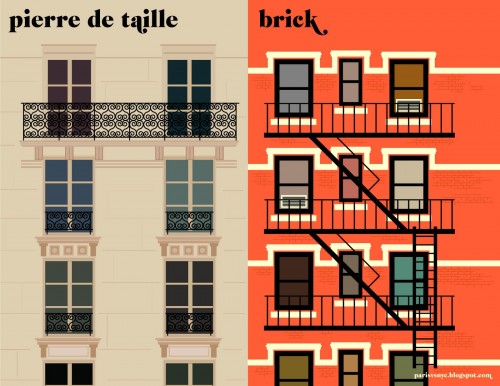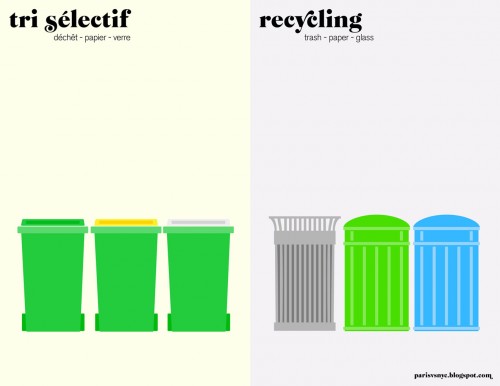A visual but friendly match between those two cities seen by a lover of Paris wandering through New York’s infinite details, clichés and contradictions.

Vahram Muratyan, a curious mind and talented designer, reduced the differences between Big Apple and the City of Light to the essential. As a result he shows us great visualizations of urban lifestyle on both sides of the Atlantic. I appreciate his minimalist approach amongst all those overloaded infographics of our days.
It would be interesting to see other cities matched, too. Berlin could be especially funny, with “Mietskaserne”, “Kaffee Latte”, “Trinkgeld”, “Grünanlagen”, “Mülltrennung” etc.
For many more matches between the two cities have a look at parisvsnyc.blogspot.com and follow @parisvsnyc on Twitter!









